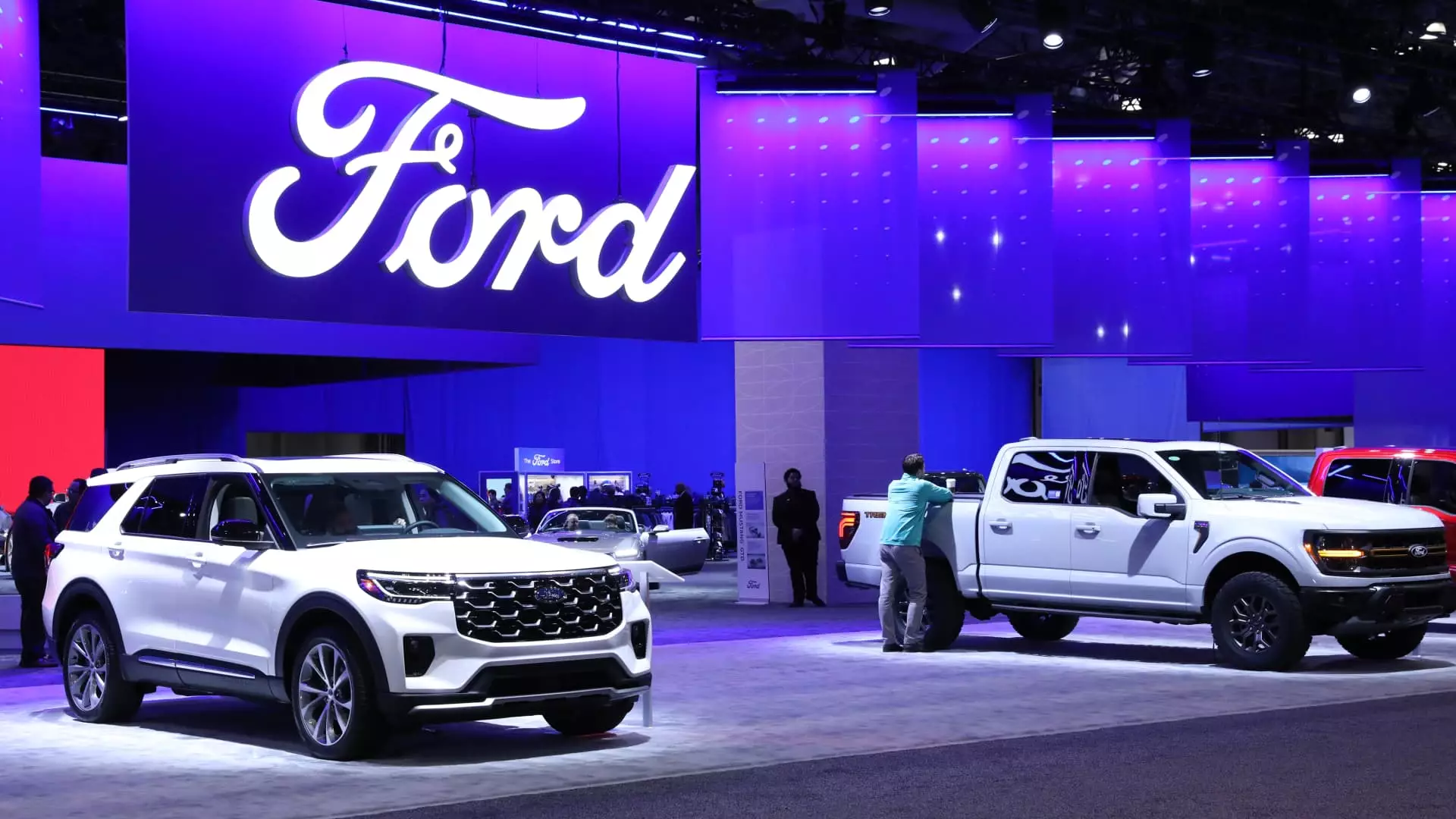Ford Motor fell short of Wall Street’s expectations in the second quarter, with higher-than-anticipated warranty costs impacting the automaker’s profitability. While the company exceeded revenue projections, its earnings per share were only 47 cents, compared to the expected 68 cents. This discrepancy led to a drop in Ford’s stock price by about 11% after the markets closed. Despite the disappointing earnings, Ford increased its full-year free cash flow target but kept its 2024 earnings guidance unchanged, which disappointed investors who were hoping for an upgrade.
A major factor affecting Ford’s profitability in the second quarter was the increase in warranty reserves used to cover vehicle issues. These costs mainly pertained to vehicles from the 2021 model year or older. Ford’s Chief Financial Officer, John Lawler, mentioned during a media briefing that recent efforts to enhance quality and streamline vehicle launches have been effective in reducing future warranty expenses. The total warranty cost for the second quarter was not disclosed, but it was $800 million higher than the previous quarter, reflecting the ongoing challenges faced by the automaker.
Ford reported a net income of $1.83 billion for the second quarter, or 46 cents per share, down from $1.92 billion, or 47 cents per share, in the same period last year. Adjusted earnings before interest and taxes (EBIT) declined by 27% year over year to $2.76 billion, or 47 cents per share, compared to $3.79 billion, or 72 cents per share, in the second quarter of 2023. Despite these setbacks, Ford’s total revenue for the quarter, including its finance business, rose by approximately 6% year over year to $47.81 billion.
Ford CEO Jim Farley reassured investors that the company’s Ford+ restructuring plan is progressing as planned to enhance profitability. The restructuring includes two key segments: Ford Blue, which earned $1.17 billion in the second quarter, and Ford Pro, the commercial business segment that brought in $2.56 billion. However, the “Model e” electric vehicle unit incurred a loss of $1.14 billion during the same period. Farley emphasized that Ford’s transformation is ongoing, with a focus on customer choice and next-generation electric vehicles (EVs) to drive future profitability.
As Ford navigates the evolving automotive landscape, the company is refining its EV strategy to align with market demands and technological advancements. Farley highlighted Ford’s updated EV plan, which centers on a compact next-generation EV platform, as a key driver of future success. While Ford’s stock had gained over 10% by the end of the year, there are concerns among Wall Street analysts that automaker profits may have reached their peak. Despite internal pressures to revise guidance, Ford remained cautious in its outlook, acknowledging the potential fluctuations in the market throughout the year.
In comparison to its rival General Motors (GM), Ford faced challenges in meeting investor expectations for profitability and growth. GM recently raised its yearly guidance for the second time in 2024, outperforming Wall Street’s forecasts and consequently boosting investor confidence. While Ford’s financial performance fell short in the second quarter, the automaker remains focused on executing its strategic initiatives to drive long-term success in a competitive and dynamic industry landscape. Time will tell whether Ford’s transformation efforts will yield the desired results and position the company for sustained growth in the future.
Ford Motor’s second-quarter earnings reflect a mixed performance, with revenue exceeding estimates but earnings falling short due to increased warranty costs. Despite these challenges, Ford’s leadership remains optimistic about the company’s trajectory and ongoing transformation efforts. As Ford continues to adapt to market trends and consumer preferences, the automaker faces both opportunities and obstacles in its journey towards sustainable profitability and competitiveness in the automotive sector.

